United States federal executive departments
The United States federal executive departments are the principal units of the executive branch of the federal government of the United States. They are analogous to ministries common in parliamentary or semi-presidential systems but (the United States being a presidential system) they are led by a head of government who is also the head of state. The executive departments are the administrative arms of the president of the United States. There are currently 15 executive departments.
| This article is part of a series on the |
| Politics of the United States |
|---|
 |
|
Each department is headed by a "secretary" of their respective department, with the exception of the Department of Justice, whose head is known as the "attorney general". The heads of the executive departments are appointed by the president and take office after confirmation by the United States Senate, and serve at the pleasure of the president. The heads of departments are members of the Cabinet of the United States, an executive organ that normally acts as an advisory body to the president. In the Opinion Clause (Article II, section 2, clause 1) of the U.S. Constitution, heads of executive departments are referred to as "principal Officer in each of the executive Departments".
The heads of executive departments are included in the line of succession to the president, in the event of a vacancy in the presidency, after the vice president, the speaker of the House and the president pro tempore of the Senate.
Current departments
| Seal | Department | Formed | Employees | Annual budget | Head | ||
|---|---|---|---|---|---|---|---|
| Portrait | Name and title | ||||||
 |
State | July 27, 1789 | 69,000 13,000 Foreign Service 11,000 Civil Service 45,000 local |
$52.505 billion (2020) |
 |
Antony Blinken Secretary of State | |
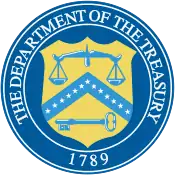 |
Treasury | September 2, 1789 | 86,049 (2014) |
$16.55 billion (2021) |
.jpg.webp) |
Janet Yellen Secretary of the Treasury | |
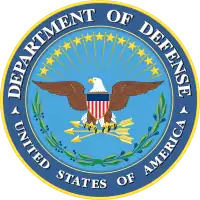 |
Defense | September 18, 1947 | 2.86 million | $716 billion (2021) |
.jpg.webp) |
Lloyd Austin Secretary of Defense | |
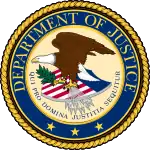 |
Justice | July 1, 1870 | 113,543 (2012) |
$33.2 billion (2021) |
 |
Merrick Garland Attorney General | |
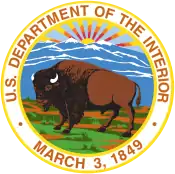 |
Interior | March 3, 1849 | 70,003 (2012) |
$21.55 billion (2021) |
 |
Deb Haaland Secretary of the Interior | |
 |
Agriculture | May 15, 1862 | 105,778 (June 2007) |
$151 billion (2021) |
.jpg.webp) |
Tom Vilsack Secretary of Agriculture | |
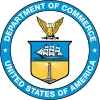 |
Commerce | February 14, 1903 | 43,880 (2011) |
$7.89 billion (2021) |
.jpg.webp) |
Gina Raimondo Secretary of Commerce | |
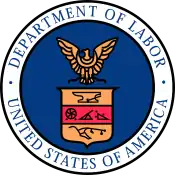 |
Labor | March 4, 1913 | 17,450 (2014) |
$41.7 billion (2021) |
 |
Marty Walsh Secretary of Labor | |
 |
Health and Human Services | April 11, 1953 | 79,540 (2015) |
$1.394 trillion (2021) |
 |
Xavier Becerra Secretary of Health and Human Services | |
 |
Housing and Urban Development | September 9, 1965 | 8,416 (2014) |
$47.9 billion (2021) |
 |
Marcia Fudge Secretary of Housing and Urban Development | |
 |
Transportation | April 1, 1967 | 58,622 | $89 billion (2021) |
.jpg.webp) |
Pete Buttigieg Secretary of Transportation | |
 |
Energy | August 4, 1977 | 12,944 (2014) |
$35.36 billion (2021) |
.jpg.webp) |
Jennifer Granholm Secretary of Energy | |
 |
Education | October 17, 1979 | 3,912 (2018) |
$72.3 billion (2021) |
 |
Miguel Cardona Secretary of Education | |
 |
Veterans Affairs | March 15, 1989 | 377,805 (2016) |
$243.3 billion (2021) |
 |
Denis McDonough Secretary of Veterans Affairs | |
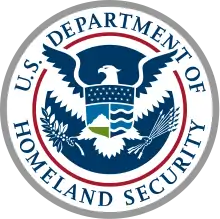 |
Homeland Security | November 25, 2002 | 229,000 (2017) |
$75.88 billion (2021) |
 |
Alejandro Mayorkas Secretary of Homeland Security | |
Former departments
| Seal | Department | Formed | Removed from Cabinet | Superseded by | Last Cabinet-level head appointed | ||
|---|---|---|---|---|---|---|---|
| Portrait | Name and title | ||||||
 |
War | August 7, 1789 | September 18, 1947 | Department of the Army Department of the Air Force |
 |
Kenneth C. Royall Secretary of War | |
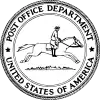 |
Post Office | February 20, 1792 | July 1, 1971 | Postal Service |  |
Winton M. Blount Postmaster General | |
.png.webp) |
Navy | April 30, 1798 | August 10, 1949 | Department of Defense (as executive department) became and still are military departments within the Department of Defense |
 |
Francis P. Matthews Secretary of the Navy | |
 |
Army | September 18, 1947 |  |
Gordon Gray Secretary of the Army | |||
 |
Air Force |  |
W. Stuart Symington Secretary of the Air Force | ||||
Proposed departments
- Department of Industry and Commerce, proposed by Secretary of the Treasury William Windom in a speech given at a Chamber of Commerce dinner in May 1881.[1]
- Department of Natural Resources, proposed by the Eisenhower administration,[2] President Richard Nixon,[3] the 1976 GOP national platform,[4] and by Bill Daley (as a consolidation of the Departments of the Interior and Energy, and the Environmental Protection Agency).[5]
- Department of Peace, proposed by Senator Matthew Neely in the 1930s, Congressman Dennis Kucinich, 2020 presidential candidate Marianne Williamson, and other members of the U.S. Congress.[6][7]
- Department of Social Welfare, proposed by President Franklin Roosevelt in January 1937.[8]
- Department of Public Works, proposed by President Franklin Roosevelt in January 1937.[8]
- Department of Conservation (renamed Department of the Interior), proposed by President Franklin Roosevelt in January 1937.[8]
- Department of Urban Affairs and Housing, proposed by President John F. Kennedy.[9]
- Department of Business and Labor, proposed by President Lyndon Johnson.[10]
- Department of Community Development, proposed by President Richard Nixon; to be chiefly concerned with rural infrastructure development.[3][11]
- Department of Human Resources, proposed by President Richard Nixon; essentially a revised Department of Health, Education, and Welfare.[3]
- Department of Economic Affairs, proposed by President Richard Nixon; essentially a consolidation of the Departments of Commerce, Labor, and Agriculture.[12]
- Department of Environmental Protection, proposed by Senator Arlen Specter and others.[13]
- Department of Intelligence, proposed by former Director of National Intelligence Mike McConnell.[14]
- Department of Global Development, proposed by the Center for Global Development.[15]
- Department of Art, proposed by Quincy Jones.[16]
- Department of Business, proposed by President Barack Obama as a consolidation of the U.S. Department of Commerce's core business and trade functions, the Small Business Administration, the Office of the U.S. Trade Representative, the Export-Import Bank, the Overseas Private Investment Corporation, and the U.S. Trade and Development Agency.[17][18]
- Department of Education and the Workforce, proposed by President Donald Trump as a consolidation of the Departments of Education and Labor.[19]
- Department of Health and Public Welfare, proposed by President Donald Trump as a renamed Department of Health and Human Services.[20]
- Department of Economic Development, proposed by Senator Elizabeth Warren to replace the Commerce Department, subsume other agencies like the Small Business Administration and the Patent and Trademark Office, and include research and development programs, worker training programs, and export and trade authorities like the Office of the U.S. Trade Representative with the single goal of creating and defending good American jobs.[21]
- Department of Technology, proposed by businessman and 2020 Democratic presidential Candidate Andrew Yang.[22]
- Department of Children and Youth, proposed by Marianne Williamson.[23]
- Department of Culture, patterned on similar departments in many foreign nations, proposed by, among others, Murray Moss[24] and Jeva Lange.[25]
See also
- Independent agencies of the United States government
- List of federal agencies in the United States
- Canadian Federal government departments
- British government departments
- Cabinet of the Confederate States of America
References
Citations
- "A Department of Commerce". The New York Times. 1881-05-13.
- Improving Management and Organization in Federal Natural Resources and Environmental Functions: Hearing Before the Committee on Governmental Affairs, U. S. Senate. Diane Publishing. April 1, 1998. ISBN 9780788148743. Archived from the original on January 14, 2019. Retrieved February 20, 2017 – via Google Books.
Chairman Stevens. Thank you very much. I think both of you are really pointing in the same direction as this Committee. I do hope we can keep it on a bipartisan basis. Mr. Dean, when I was at the Interior Department, I drafted Eisenhower's Department of Natural Resources proposal, and we have had a series of them that have been presented.
- "116 - Special Message to the Congress on Executive Branch Reorganization". The University of California, Santa Barbara - The American Presidency Project. Archived from the original on February 14, 2017. Retrieved February 13, 2017.
The administration is today transmitting to the Congress four bills which, if enacted, would replace seven of the present executive departments and several other agencies with four new departments: the Department of Natural Resources, the Department of Community Development, the Department of Human Resources and the Department of Economic Affairs.
- "Republican Party Platform of 1976". The University of California, Santa Barbara - The American Presidency Project. August 18, 1976. Archived from the original on April 2, 2015. Retrieved March 13, 2015.
- Thrush, Glenn (November 8, 2013). "Locked in the Cabinet". Politico. Archived from the original on November 17, 2013. Retrieved November 18, 2013.
- Schuman, Frederick L. (1969). Why a Department of Peace. Beverly Hills: Another Mother for Peace. p. 56. OCLC 339785.
- "History of Legislation to Create a Dept. of Peace". Archived from the original on 2006-07-20.
- "10 - Summary of the Report of the Committee on Administrative Management". The University of California, Santa Barbara - The American Presidency Project. Archived from the original on February 13, 2017. Retrieved February 13, 2017.
Overhaul the more than 100 separate departments, boards, commissions, administrations, authorities, corporations, committees, agencies and activities which are now parts of the Executive Branch, and theoretically under the President, and consolidate them within twelve regular departments, which would include the existing ten departments and two new departments, a Department of Social Welfare, and a Department of Public Works. Change the name of the Department of Interior to Department of Conservation.
- "23 - Special Message to the Congress Transmitting Reorganization Plan 1 of 1962". The University of California, Santa Barbara - The American Presidency Project. Archived from the original on February 14, 2017. Retrieved February 13, 2017.
- "121 - Special Message to the Congress: The Quality of American Government". The University of California, Santa Barbara - The American Presidency Project. Archived from the original on February 14, 2017. Retrieved February 13, 2017.
In my State of the Union Address, and later in my Budget and Economic Messages to the Congress, I proposed the creation of a new Department of Business and Labor.
- "33 - Special Message to the Congress on Rural Development". The University of California, Santa Barbara - The American Presidency Project. Archived from the original on February 14, 2017. Retrieved February 13, 2017.
- "116 - Special Message to the Congress on Executive Branch Reorganization". The University of California, Santa Barbara - The American Presidency Project. Archived from the original on February 14, 2017. Retrieved February 13, 2017.
The new Department of Economic Affairs would include many of the offices that are now within the Departments of Commerce, Labor and Agriculture. A large part of the Department of Transportation would also be relocated here, including the United States Coast Guard, the Federal Railroad Administration, the St. Lawrence Seaway Development Corporation, the National Transportation Safety Board, the Transportation Systems Center, the Federal Aviation Administration, the Motor Carrier Safety Bureau and most of the National Highway Traffic Safety Administration. The Small Business Administration, the Science Information Exchange program from the Smithsonian Institution, the National Institute for Occupational Health and Safety from the Department of Health, Education, and Welfare and the Office of Technology Utilization from the National Aeronautics and Space Administration would also be included in the new Department.
- "Public Notes on 02-RMSP3". Archived from the original on June 13, 2017. Retrieved February 20, 2017.
- "A Conversation with Michael McConnell". Council on Foreign Relations (Federal News Service, rush transcript). June 29, 2007. Archived from the original on January 17, 2013. Retrieved January 9, 2013.
- "Time for a Cabinet-Level U.S. Department of Global Development". The Center for Global Development. Archived from the original on January 14, 2019. Retrieved February 15, 2017.
- Clarke, Jr., John (January 16, 2009). "Quincy Jones Lobbies Obama for Secretary of Culture Post". Rolling Stone. Archived from the original on September 8, 2012. Retrieved August 19, 2010.
{{cite magazine}}: CS1 maint: multiple names: authors list (link) - "President Obama Announces proposal to reform, reorganize and consolidate Government". whitehouse.gov. Archived from the original on February 11, 2017. Retrieved February 8, 2017 – via National Archives.
- "Obama Suggests 'Secretary of Business' in a 2nd Term - Washington Wire - WSJ". The Wall Street Journal. Archived from the original on March 1, 2017. Retrieved August 4, 2017.
- "White House Proposes Merging Education And Labor Departments". NPR.org. Archived from the original on June 21, 2018. Retrieved June 22, 2018.
- "Delivering Government Solutions in the 21st Century | Reform Plan and Reorganization Recommendations" (PDF). whitehouse.gov. 2018. Archived (PDF) from the original on April 12, 2019.
- Warren, Team (2019-06-04). "A Plan For Economic Patriotism". Medium. Archived from the original on July 31, 2019. Retrieved 2019-07-30.
- "Regulate AI and other Emerging Technologies". Andrew Yang for President. Archived from the original on August 20, 2019. Retrieved 2019-08-21.
- "U.S. Department of Children and Youth "The Whole Child Plan"". Marianne Williamson for President. Retrieved 2020-12-01.
- Garber, Megan (2013-07-01). "Should the U.S. Have a Secretary of Culture?". The Atlantic. Retrieved 2021-01-22.
- "Hey Joe – appoint a culture secretary". theweek.com. 2020-11-16. Retrieved 2021-01-22.
Sources
- Relyea, Harold C. "Homeland Security: Department Organization and Management" (PDF), Report for Congress, 2002. RL31493 (August 7, 2002).
External links
 Media related to Executive Departments of the United States at Wikimedia Commons
Media related to Executive Departments of the United States at Wikimedia Commons